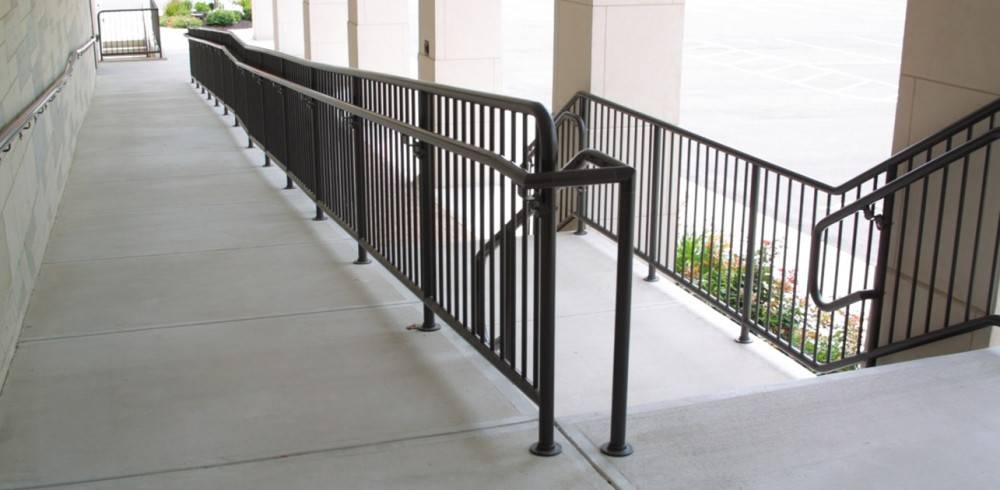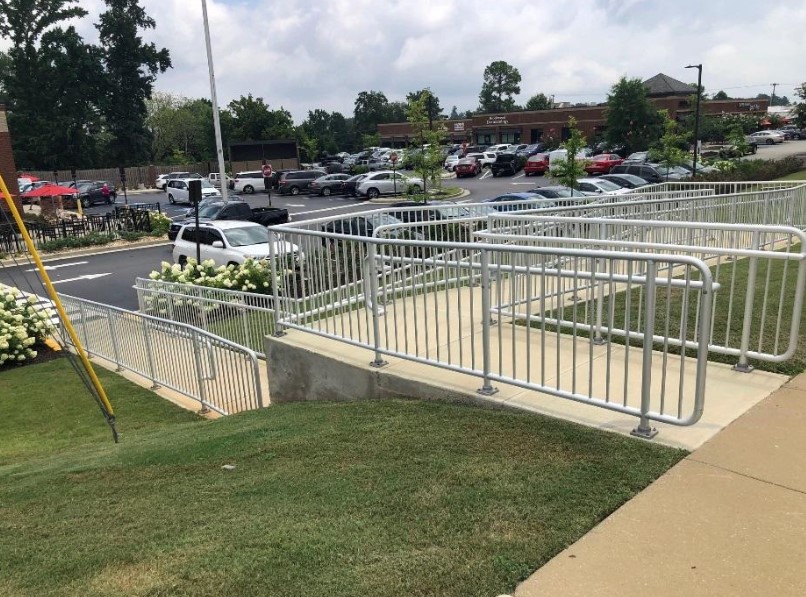The Americans with Disabilities Act established precedents to ensure all could equally enjoy public and commercial buildings across the country, so where does handrail fit in?
Signed into law in 1990, the Americans with Disabilities Act (ADA) provides protection to those with disabilities that may be hindered from interacting with environments and people in the same manner as those without disabilities. The final version of the bill was signed in July of 1990, so what better month to publish a focus on the ADA than now!
WHAT IS THE ADA?
The full breadth of the ADA, as with most laws, goes much deeper than a surface level explanation. However, for our purposes let’s take a 10,000-foot view of the act. In general, the ADA contains four main titles that focus on different aspects of inclusion for people with disabilities. They are:
- Title I – Employment: Measures which prevent employers from denying employment on the basis of a disability
- Title II – Public Entities: Prohibition of discrimination by public entities (municipalities, school districts, etc.) in all programs and services offered
- Title III – Public Accommodation: Public and commercial locations must be made accessible and fully enjoyable for those with disabilities
- Title IV – Telecommunications: Ensures communication methods are accessible for all
Our main focus will be on meeting regulations noted in Title III.
WHERE DOES HANDRAIL FIT IN?
A major component of Title III of the ADA is access for persons with disabilities to public locations. In many cases this boils down to one thing: a ramp. There are a litany of regulations and size requirements related to entry ramps for ADA compliance, one of which is the necessity of a handrail to ensure safe travel up and down.

An ADA-Compliant Ramp with Handrail
Naturally, the handrail on the ramps has its own set of rules:
- All handrail must be installed between 34” and 38” high to ensure maximum ease of use by patrons of all sizes and capabilities
- Rail extensions at a minimum of 12” must be present past the end of the ramp in both directions of travel. This provides support before entering or exiting ramps.
- Handrail must be continuous and unobstructed on tops and sides for ease of use
- Handrail must be 1-1/2” minimum from the wall or obstruction, and must be between 1-1/4” and 2” in diameter (for round handrail) for maximum grasp-ability
This may seem like a large dose of arbitrary restrictions, but when combined they create a ramp that allows everyone to enjoy what the world has to offer.
CAN ALL OF THESE RESTRICTIONS ACTUALLY BE MET?
The answer is a resounding yes! At Superior Aluminum, we work hard to ensure each pipe handrail is pre-assembled to meet every need specified in the ADA. Handrails are specially designed to work either with an existing wall or guard, or to be perfectly compatible with Superior guardrail.

If you are in need of ADA-compliant railing for a ramp or other portion of your facility, feel free to contact us or use our railing quote tool to go straight to a quotation request!




